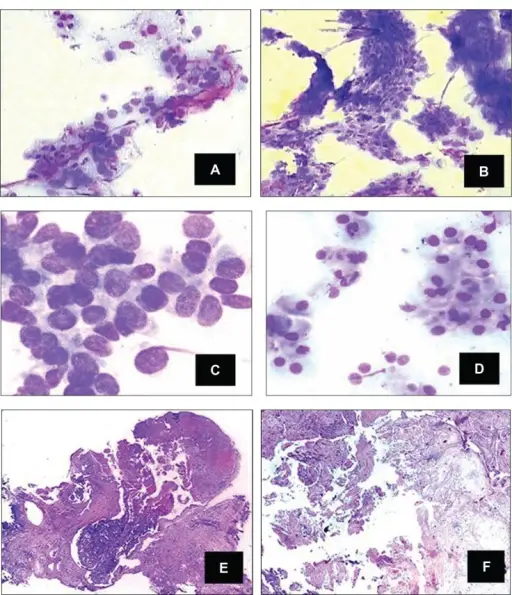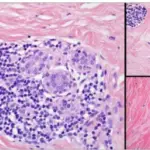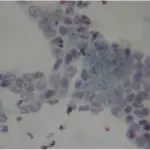Squamous metaplasia of lactiferous ducts is when the normal cuboidal epithelium lining the lactiferous ducts is replaced by squamous epithelium, leading to intraluminal accumulation of epithelial debris.
What is the Pathology of Squamous Metaplasia of Lactiferous Ducts?
The pathology of squamous metaplasia of lactiferous ducts is:
-Etiology: The cause of squamous metaplasia of lactiferous ducts is strongly correlated with smoking.
-Pathogenesis: The sequence of events that lead to squamous metaplasia of lactiferous ducts is the normal cuboidal epithelium lining the lactiferous ducts which is replaced by squamous epithelium.
-Morphology: The morphology associated with squamous metaplasia of lactiferous ducts shows a retro-areolar asymmetrical density, squamous cells, and mixed inflammation including macrophages.
-Histology: The histology associated with squamous metaplasia shows squamous epithelium extending beyond the normal transition point to ductal epithelium. The duct spaces are filled with keratin debris.
How does Squamous Metaplasia of Lactiferous Ducts Present?
Patients with squamous metaplasia of lactiferous ducts typically are either male or female present at age range of wide age groups. The symptoms, features, and clinical findings associated with squamous metaplasia of lactiferous ducts include a retro-areolar, predominately medial, ill-defined, hypoechoic lesion with either abscess or sinus and fistula formation.
How is Squamous Metaplasia of Lactiferous Ducts Diagnosed?
Squamous metaplasia of lactiferous ducts is diagnosed through mammography and ultrasonography. Pathology tissue confirmation is always required and this can be by histology of a core biopsy or excision specimen, or fine-needle aspiration (FNA) cytology.
How is Squamous Metaplasia of Lactiferous Ducts Treated?
Squamous metaplasia of lactiferous ducts is treated by duct excision of the affected duct.
What is the Prognosis of Squamous Metaplasia of Lactiferous Ducts?
The prognosis of squamous metaplasia of lactiferous ducts is fair.



